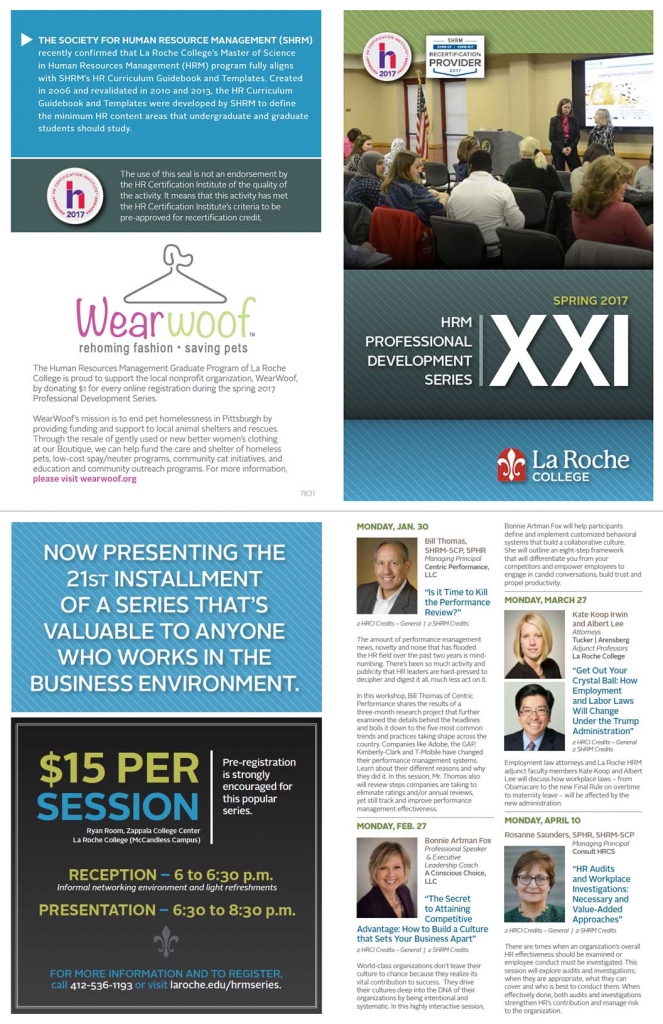Compliance is the foundation for effective HR
It is hard to read recent business news coverage without finding evidence of ineffective, if not downright incompetent HR operations. Compliance with laws and regulations affecting the employment relationship is the foundation of effective HR and a necessary component of healthy and growing businesses. While good compliance does not guarantee success, those without it are extremely vulnerable and disadvantaged. These companies can be damaged in ways that are painful, public and costly.
One area of great financial exposure is compliance with wage and hour requirements at the federal and state level. The two largest class action lawsuit settlements of 2016 involved FedEx Ground and claims that employees were misclassified as independent contractors. These settlements were valued at $240 and $226 million.
Join us for a program on employment law
On Thursday, November 9 from 7:30 to 10 a.m. at CONSOL Energy (1000 Consol Energy Drive, Canonsburg) the Southwestern Pennsylvania Human Resources Organization is hosting a program on Employment Law.
Karen Welton from the US Department of Labor will be speaking on the Fair Labor Standards Act; Rachel Lozosky, Esq. will cover Pennsylvania wage and hour laws and I will be talking about how HR audits can support compliance initiatives. Go to www.swpahro.com to register.
What can you do?
Be a part of the solution when it comes to contributing to a strong culture of compliance at your company:
- Acquire baseline knowledge in your areas of responsibility or associated with your desired career through degree, certificate or certification programs.
- Choose your employers carefully and wisely. Probe to assess the organization’s commitment to a culture of HR compliance. Look at the reporting relationship of HR and the status of the HR executive. Ask questions about compliance programs, Codes of Conduct and training provided.
- Never stop learning. Laws and regulations change. Court decisions alter interpretations of laws and regulations. Professional organizations, law firms and consulting firms provide ongoing opportunities to learn the most up-to-date information through seminars, webinars and publications. Government agencies provide how-to guides and direct assistance. The Department of Labor has particularly robust on-line resources.
- Know what you don’t know and where your resources are because, let’s face it, it’s complicated. Employee benefits consultants and brokers, labor and employment attorneys and HR consultants are most effective when they help you design compliant policies and practices before issues arise.


 For years the following phrases were taped to my desk blotter: “Model the Way; Inspire a Shared Vision; Challenge the Process; Enable Others to Act; Encourage the Heart”. These are the Five Practices of Exemplary Leadership ® and formed the foundation of an in-house leadership development curriculum at the health system where I worked in the 1990s. I found daily inspiration and concrete guidance in these dozen words and they shaped the way I understand how effective leaders work.
For years the following phrases were taped to my desk blotter: “Model the Way; Inspire a Shared Vision; Challenge the Process; Enable Others to Act; Encourage the Heart”. These are the Five Practices of Exemplary Leadership ® and formed the foundation of an in-house leadership development curriculum at the health system where I worked in the 1990s. I found daily inspiration and concrete guidance in these dozen words and they shaped the way I understand how effective leaders work.